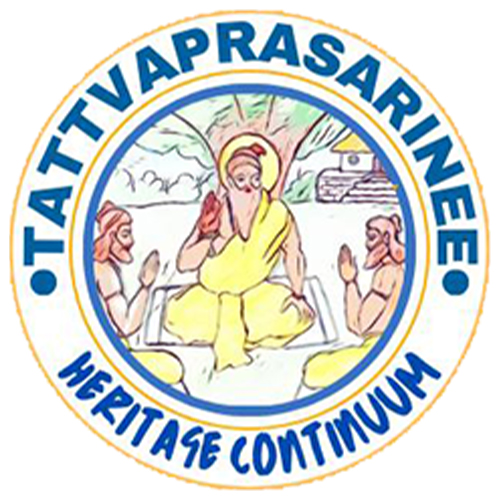The Bhagavad Gita states, “Gayatri chandasa maham” – among all the Vedic metres (Chandas), Gayatri is the most supreme and revered. This reflects the tradition upheld by the great sages who recognized Gayatri as the foremost of all metres. The Vibhuti Yoga of the Bhagavad Gita highlights that wherever greatness is observed in this world, it is but a manifestation of the divine glory of Bhagavan. In this context, Sri Krishna himself acknowledges Gayatri as an extension of his own divine essence.
Adi Shankaracharya, in his commentary, explains: “Gayatyadi chandovishishtanam richam gayatri rik aham ityarthah” – meaning that among the Vedic metres, Gayatri, which belongs to the Rik Veda, is of the highest significance.
The Meaning and Essence of Gayatri
The term ‘Gayatri’ derives from its etymology: “Gayanat trayate iti Gayatri” – that which protects through its recitation. This implies that by chanting or meditating upon the Gayatri mantra, one is safeguarded from the ocean of suffering and attains liberation.
Similarly, the definition of a ‘mantra’ is given as: “Mananat trayate iti mantrah” – meaning that which protects by constant contemplation and repetition. Through ceaseless remembrance and chanting, a mantra becomes the means of crossing the ocean of worldly existence. Thus, from both a phonetic and spiritual perspective, the Gayatri mantra holds an exalted place in sadhana (spiritual practice).
The Gayatri Mantra as a Bija Mantra
A bija mantra is a seed syllable or primordial sound that carries immense potency. The Vedas themselves, composed of divine, non-human (apaurusheya) sound vibrations, are fundamentally expressions of Shabda Brahman – the ultimate reality in the form of sound. The Gayatri mantra is considered a bija mantra due to its inherent divine power. Since it is not man-made, it transcends human limitations and possesses extraordinary spiritual energy.
The Power of Japa – The Repetition of the Mantra
The significance of japa (mantra repetition) is beautifully explained in the verse:
“Jakaro janma vicchedah, pakaro papa nashanah,Janma-karma haro yasmat, tasmaj japa itiryate.”
Here, the syllable ‘Ja’ signifies the destruction of the cycle of birth and death, while ‘Pa’ represents the eradication of sins. Together, they form the word ‘Japa,’ which implies the practice of mantra repetition as a means of liberation. When a seeker engages in the japa of a supreme mantra like Gayatri, the results manifest swiftly and effectively, ultimately leading to complete spiritual fulfillment.
The Significance of Initiation (Upadesha)
Any mantra attains its highest efficacy when imparted by a guru through the sacred process of initiation (upadesha). The Vedic tradition emphasizes the importance of learning the Gayatri mantra under the guidance of an acharya. In the Upanayana (sacred thread) ceremony, the father assumes the role of the guru and initiates his son into the mantra, preserving an unbroken lineage of transmission. This practice has been upheld for generations, ensuring that the sacred knowledge remains intact and effective.
The Misconceptions and Need for Revival
In modern times, it is unfortunate that the Gayatri mantra is often misunderstood or regarded with indifference by the common masses. Some erroneously believe that this mantra is meant to be chanted only by certain sections of society, while in reality, the scriptures do not impose such restrictions. The deviation from tradition over time has led to misconceptions, and today, some even blame the few who have diligently preserved the practice.
While historical changes have created barriers, in the rational age we live in, it is imperative to go beyond social constructs and rediscover the true essence of the mantra. A deeper and unbiased exploration of the Gayatri mantra’s significance will allow us to appreciate its universality and spiritual power without prejudice. It is the duty of every seeker to understand and uphold the sanctity of this divine mantra, ensuring its practice continues for generations to come.
